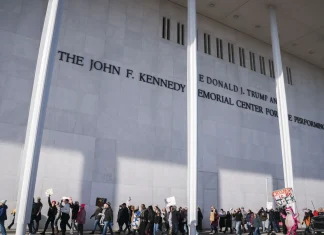Behind the Headlines: Unpacking Israel’s Controversial Gaza City Plan
When Israeli Prime Minister Benjamin Netanyahu unveiled the plan for a full-scale military takeover of Gaza City, the world’s gaze shifted sharply to one densely packed corner of a besieged enclave. But beneath the flashing headlines and urgent global reactions lies a deeper, often overlooked narrative—a narrative that the plan itself could be a strategic diversion, a carefully crafted smokescreen obscuring broader, grimmer realities unfolding across Gaza.
Dr. Tahani Mustafa, a Visiting Fellow at the European Council on Foreign Relations, paints a sobering picture. Speaking to me recently, she cautioned against being drawn too deeply into the spectacle of military maneuvers at Gaza City, calling it a “distraction” from Israel’s extensive and ongoing policies in Gaza. “What we are witnessing here is a kind of orchestrated fixation on Gaza City,” she explained, “while the international community’s focus and outrage are manipulated away from more systemic issues — like the deepening famine and the collapse of ceasefire efforts.”
A City Under Siege, a Region in Crisis
Gaza’s landscape today is a haunting mosaic of devastation. The city’s infrastructure is in ruins—roads crumbled under relentless bombardments, utility networks reduced to their skeletal remnants. Dr. Mustafa reflects, “It’s not just a question of military strategy; it’s a question of humanity. How do you expect millions of people to relocate to safer areas when there are literally no functioning roads left? Gazans can’t run if they don’t have a place to run to.”
Her words echo the stark realities faced daily by Gaza’s roughly 2.3 million residents, many of whom are squeezed into some of the last habitable pockets within the Strip. Gaza City remains one of the final strongholds in the north, alongside just two other population centers. This shrinking geography of survival casts a shadow over what’s framed as a military ‘operation.’
“The plan is not just about a military takeover,” Dr. Mustafa continues gravely. “It’s part of a broader, chilling effort to depopulate the Gaza Strip. Those forced southwards—those who refuse or cannot move—are being marked not as civilians, but as ‘legitimate combatants.’ The idea of ‘safe spaces’ is evaporating before our eyes.”
The International Chorus of Concern—and Its Limits
The global response has been swift and vociferous. European Commission President Ursula von der Leyen urged Israel to “reconsider” the plan, emphasizing the urgent need for humanitarian aid and ceasefire negotiations. UN Human Rights Chief Volker Türk called for an “immediate halt,” while UK Prime Minister Keir Starmer condemned the plan’s potential to “bring more bloodshed.” Germany took the concrete step of halting military equipment exports that could be deployed in Gaza. Meanwhile, Spain, Egypt, and Saudi Arabia lined up with denunciations, creating one of the strongest international rebukes in recent memory.
Yet, as the voices grew louder, Dr. Mustafa reminded me why declarations alone are insufficient. “Words hold power,” she said, “but in this context, they’ve often been performative. Unless these condemnations translate into tangible policy changes—meaningful pressure, real consequences—the cycle of violence and despair will persist.”
She points to a shifting tide of opinion in Europe, particularly among younger generations and progressive forums. “We’re starting to see cracks in what was once a monolithic support structure for Israel in many Western capitals,” she noted. “But without decisive actions, these cracks will not widen enough to change realities.”
The Ripple Effect: Politics Beyond Gaza
The repercussions of the Gaza City plan also ripple far beyond the immediate conflict zone. Across the Atlantic, American lawmakers have voiced concern over Ireland’s forthcoming Occupied Territories Bill (OTB), which aims to impose sanctions based on Israel’s policies in Gaza and the West Bank.
A group of US Congress members recently urged Treasury Secretary Scott Bessent to consider labeling Ireland as a country boycotting Israel if the bill passes. Dr. Mustafa interprets this development as part of a broader trend. “This could set a precedent,” she reflected. “Actions like Ireland’s and the US responses signal that the global political environment is shifting. This may embolden other nations to step forward with stronger positions, eroding the impunity often afforded in international politics.”
Life Amidst the Ashes: Stories from Gaza
Walking through the narrow alleys of Gaza City today feels like stepping back into shattered time. Families huddle under the remnants of their homes, children play amidst rubble, and the usual hum of daily life is replaced by an unsettling stillness punctuated by distant echoes of conflict.
Amina, a mother of four, shared her thoughts outside a makeshift shelter in northern Gaza. “We don’t want to leave our homes,” she said quietly. “But every day, we ask ourselves—will the bombs fall today? Where can we go when the roads are broken, and no one will stop the war?” Her voice trembles between hope and despair.
Food shortages, too, paint a grim backdrop. Recent reports from humanitarian agencies highlight rising malnutrition rates, with nearly 60% of Gazan children suffering from food insecurity. Aid convoys face constant delays and blockades, making life in Gaza not just a struggle for survival from violence but a battle against deprivation.
Questioning the Future: What Comes Next?
The compelling question hovering over Gaza and the global community alike is this: What does peace look like amid such relentless turmoil? The plan to seize Gaza City may be a new chapter in a long-standing conflict, but is it a step towards resolution or just another act in a tragic saga of displacement and despair?
For observers around the world, the unfolding drama challenges us to think deeply about the nature of war, justice, and international responsibility. How do we balance narratives of security with urgent humanitarian needs? What role should the international community play when cities become battlegrounds and civilians the collateral damage?
The Gaza City plan is more than a military strategy—it is a profound test of our collective conscience. As the world watches, it must ask itself: Are we witnesses or actors in the quest for peace? And more importantly, will the story of Gaza become one of hopeful rebuilding or a cautionary tale of missed chances and endless suffering?
Where to Go from Here?
Amid the grim statistics and political positioning, there are glimmers of resilience. Aid workers and volunteers continue to deliver scarce assistance. Civic leaders advocate tirelessly for ceasefires and humanitarian corridors. And an increasingly aware global audience is demanding accountability.
Yet, the onus lies on governments, international bodies, and citizens alike to move beyond rhetoric. What meaningful actions can be taken? How do we ensure that statements from world leaders translate into protection, relief, and respect for human dignity?
These questions invite us to look beyond the headlines and see the human faces captured within them. To empathize. To engage. To act.
As you, dear reader, reflect on the unfolding events in Gaza, consider this: In a world bursting with conflict, how do we ensure that stories like Gaza’s inspire not just sorrow but solidarity, not just outrage but lasting change?










